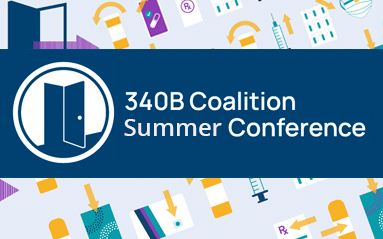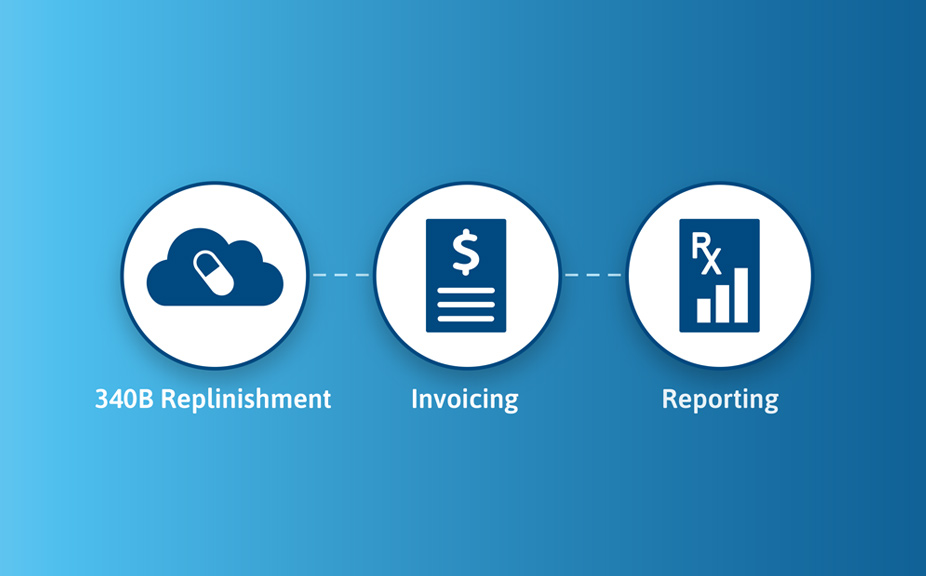3 Ways to Optimize Your 340B Program
 Industry Insights
Industry Insights
The 340B program is designed to allow eligible Covered Entities to stretch scarce health care dollars to provide services to the communities they serve and support the uninsured and underinsured patients with options that help them afford their prescription medications.
Review Prescriptions and Capture Rate
Most participating Covered Entities might not be taking full advantage of the 340B program. A quick review of the total annual prescriptions written by providers compared to the total prescriptions captured in your 340B program can give you an idea of how well your program is optimized. This can be done by routinely reviewing key reports from your e-prescribe program and should always be done in collaboration with your 340B TPA to ensure that capture logic is taken into consideration.
Close attention to the pharmacies in your network and the capture model used can provide valuable insight when evaluating your program. Certain chain pharmacies subscribe to the “all claims” capture model, which may increase your overall capture rate but can harm the profitability of your program. It may be beneficial to review the chain pharmacies in your network that subscribe to the “all claims” capture model separately as this can determine their value vs. chain pharmacies using other models, like “brand only” and “profit only.” When reviewing your annual capture rate, pay attention to all pharmacies where prescriptions are being filled by reviewing e-prescribe data and contract pharmacy performance. Patients can change the pharmacies where they go to fill their prescriptions over time. This review can identify additional pharmacies that should be contracted and added to your network.
Tap into Specialty Pharmacy
It's common to overlook capturing prescriptions written by specialists where your providers have referred patients for specialized attention. These referral providers are usually endocrinologists, dermatologists, rheumatologists, gastroenterologists, and others who treat specific disease states.
Since the prescriptions written by these referral providers can typically be higher-cost specialty medications, capturing these in your 340B program can add significant additional savings. Your policies and procedures should indicate that your providers are to document all referrals in the patient’s EMR record and ideally, all specialists should be sending a follow-up letter back to the referring provider. From this data and via detailed reports, you can identify which specialty pharmacies your patients are using to fill these prescriptions. Once identified, you can contract with each specialty pharmacy to be included in your 340B network.
A key part of capturing these referral prescriptions is to understand how your TPA’s technology works. Additional logic and functionality are required to bring these referral prescriptions into the technology. Most specialty pharmacies don’t use switch data but rather have a direct data feed to TPAs. Thus, more than a data pull from the specialty pharmacies needs to be done to effectively capture all the appropriate specialty claims. TPAs that capture specialty claims effectively have sophisticated referral claims technology, plus additional services that monitor capture logic, as these may need to be adjusted from time to time. It may be beneficial to allocate resources, additional TPA services, or an experienced 340B consultant to monitor referral capture — it can pay dividends for growing your 340B program.

Making the medications more affordable can help to improve patient compliance and outcomes and can help hospitals to reduce their hospital readmission rates and avoid penalties.
Leverage 340B to Service the Uninsured and Underinsured
There is significant potential in building 340B programs to support uninsured and underinsured patients. Covered Entities have patients who may impact their charity care and can strain services and resources and adding an effective uninsured program can help lower the impact.
While the mission of each Covered Entity is to care for all these patients, there are specific strategies that can provide a positive impact for both the Covered Entity and its patients. Your 340B program should be fully leveraged to provide affordable medications for your uninsured and underinsured patients and to help effectively manage your charity care budget.
An effective uninsured program should have a customized sliding scale designed to meet the needs of your uninsured patients, maximize your charity care budget and have policies and procedures written and updated regularly to help your underinsured patients in times of need. A good sliding scale program will allow the Covered Entity to design a prescription plan supporting their uninsured patient population based on their ability to pay using federal poverty levels as guidelines, ability to add co-pay amounts, and more. Any uninsured patient program should include access to the lowest price prescriptions in the market (which may not always be 340B pricing). This allows each Covered Entity to stretch any subsidy amount as far as possible.
Education is also an essential part of your uninsured program to help train the medical and ancillary staff, patients, and local pharmacies on how to effectively utilize this program to improve access to more affordable medications and patient care. This education not only ensures patients receive their medications but can also improve overall patient care. Partnering with local pharmacies to assist in helping the uninsured may improve patient care and can strengthen the community.
While the 340B program can help Covered Entities stretch scarce healthcare dollars to provide services to the communities they serve, it also provides the resources to help the most vulnerable to relieve some of the burdens to the healthcare system. Optimizing your 340B program to deliver the savings to the Covered Entity is where most see value — taking care of their most vulnerable, uninsured, and underinsured patients is equally important.
The content in this blog is for informational purposes only and is not intended to be used in place of regulatory guidance. The opinions and views expressed herein are those of the authors and do not necessarily reflect the official position or opinions of SUNRx or any regulatory authority. Furthermore, some content may contain copyrighted material, the use of which has not always been specifically authorized by the copyright owner, but which we believe constitutes a "fair use" of any such copyrighted material as provided for in Section 107 of the US Copyright Law. We are making the information herein available in our efforts to advance understanding of the 340B program and its offerings. These views are always subject to change, revision, and rethinking at any time and may not be held in perpetuity.

 Industry Insights
Industry Insights



 Industry Insights
Industry Insights


 Industry Insights
Industry Insights

